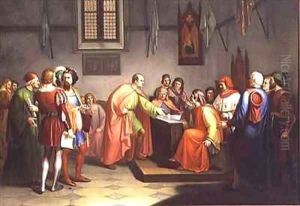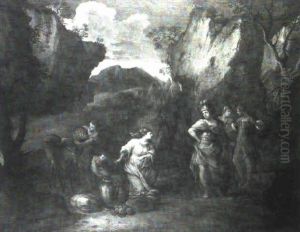Giuseppe Fattori Paintings
Giovanni Fattori was a pivotal Italian artist known for his role in the Macchiaioli movement, which was the precursor of Impressionism in Italy. Born on September 6, 1825, in Livorno, Tuscany, Fattori began his artistic training at the Academy of Fine Arts in Florence, where he was initially influenced by the grand historical paintings typical of the period. However, his style evolved significantly over time.
Fattori's early work was marked by historical and military subjects, but he soon became more interested in the landscape and daily life of his native Tuscany. He was particularly fascinated with the effects of light and shade, which became a hallmark of the Macchiaioli style. The term 'macchia' refers to the patches or spots of color that were applied with rapid brushstrokes, a technique Fattori and his colleagues used to capture the essence of a scene rather than its details.
After participating in the Italian unification wars, Fattori's art took on a more personal tone, often reflecting his experiences as a soldier. He became a professor at the Academy of Fine Arts in Florence in 1869, where he influenced a new generation of Italian painters. Despite his contributions to Italian art, Fattori lived and died in relative poverty, not achieving significant recognition until after his death on August 30, 1908.
Fattori's later work increasingly focused on the rural life and landscapes of the Maremma region. His paintings such as 'The Red Cart' and 'The Italian Camp after the Battle of Magenta' are considered masterpieces of the Macchiaioli movement. Fattori's legacy is one of a profound influence on Italian painting, particularly in his approach to color, light, and the representation of the Italian countryside.

